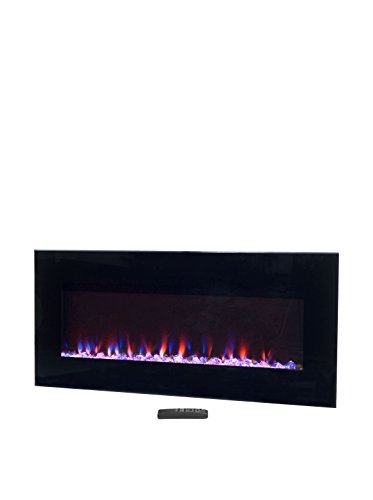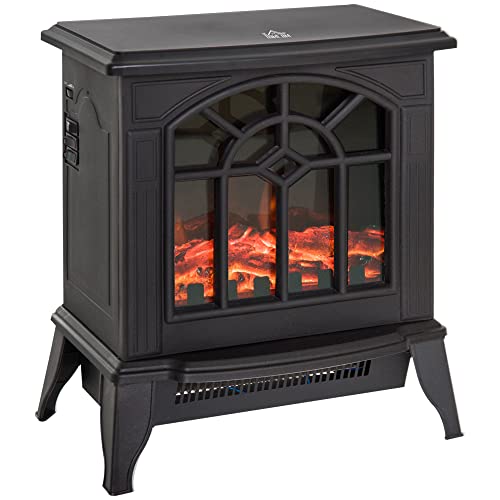What's The Most Important "Myths" About Wood Burner Fireplac…
페이지 정보

본문
 How to Get the Most From a Wood Burner Fireplace
How to Get the Most From a Wood Burner FireplaceIn contrast to traditional open fireplaces, wood stoves are designed and optimised to burn firewood. This allows them meet the stricter emission requirements.
 Wood burning stoves emit sparkling yellow flames and soft crackling sounds. They also provide an incredibly warm feeling. The smoke that is generated is filled with harmful air pollutants such as formaldehyde, benzene, and polycyclic aromatic hydrocarbons.
Wood burning stoves emit sparkling yellow flames and soft crackling sounds. They also provide an incredibly warm feeling. The smoke that is generated is filled with harmful air pollutants such as formaldehyde, benzene, and polycyclic aromatic hydrocarbons.Efficient
Fireplaces and stoves that burn wood provide beautiful and natural heat to your home, and they are extremely efficient. A top-quality wood stove can have an Ecodesign rating up to 77%. It is vital to get the most out of your wood burner particularly with the increasing energy costs. The good news is it's easier than ever to do!
The moisture content of wood is one of the main factors that determines how efficient a stove that burns wood is. We recommend using only dried and seasoned wood that has dried for at least one year, and in many cases two years. The dryer the wood is, the more efficiently it burns which results in less smoke and harmful emissions.
A wood burning stove is a low-carbon fuel source, which is great for the environment. When you purchase locally-sourced wood, you are also helping to contribute to the active management and conservation of forests. This is beneficial for wildlife.
The only thing a wood burning stove needs in terms of maintenance is to remove and get rid of the ash. It can be a bit of a hassle, but is well worth it to ensure that you get the most heat from each log. If you allow the ashes to cool completely and then, they can be used as a non-toxic, green melting ice. They can be used to polish jewelry and absorb odors.
A fireplace with a wood burner is a truly timeless classic. Although they're less popular than gas fireplaces, there is no denying the charm and appeal of a warm log fire. They're great for snuggling up to on cold evenings and are a great way to create an inviting and warm space in the heart of your home. Choose a high-quality wood burner and you'll be reaping the benefits for many years to come! Contact us today to learn more about how our skilled chimney sweeps can help you get the most out of your stove.
Low Carbon
Burners that are efficient and clean are one of the best ways to save money on logs while keeping your home warm. They also aid local woodland management. This is a fantastic way to support the wildlife that lives in your neighborhood.
Wood-burning fireplaces and stoves create minimal pollution when they are maintained properly and operated with dry, seasoned firewood. If they are not properly maintained or use wood of poor quality, the smoke that is produced is a result of fine particles, commonly referred to as particulate pollution, which can irritate lung organs and other body organs. Carbon monoxide, toxic air pollutants like formaldehyde and benzene, and polycyclic aromatic hydrocarbons are also found in. Inhaling this kind of air pollution can cause irritation to the lung as well as wheezing, coughing, and asthma attacks. It could even cause serious health conditions such as cancer, heart disease, or premature death.
Many people are concerned that using a wood-burning stove could contribute to climate change, but this is not necessarily true. Burning wood is a carbon neutral energy source. Through the life of a tree it absorbs carbon dioxide and when burned the absorbed carbon is released back into the atmosphere.
Since the wood is sourced locally, it reduces the amount of pollution that is released when it is transported. It is also important to select high-quality woods that are seasoned and seasoned as they will give an extended and more consistent burn than softwoods.
Modern wood stoves, such as the ones manufactured by Charlton & Jenrick, emit much less pollution than older stoves. They have been tested and certified to meet 2020 EPA standards, which are significantly more stringent than previous emissions limits.
All wood-burning stoves must be fully vented to the outside of your home to ensure that they don't create a build-up of exhaust inside your home. All our current DEFRA-exempt and clean burn stoves can create very clear exhaust by keeping the flames above the wood logs and by using dry and seasoned firewood.
A wood burning stove equipped with a catalytic converter or hybrid unit can provide the best low-carbon solution for heating. These units ignite gasses and particles released from the initial combustion in a second phase by mixing them with superheated air. The remaining gases and particulates are then transported through a catalytic combustion unit for a final and third combustion. This further reduces emissions to levels well below the government standards.
Clean Burn
Cleanburn wood stoves are designed to burn fuel with the greatest efficiency that is achievable. This results in minimal emissions of particles into the air when burning wood. The stove's air management system regulates the intake and exhausting of gases, ensuring the combustion process is conducted in a sealed, controlled atmosphere. It also regulates the height of the flame to maximise heat output and minimize emissions.
This means that your chimney and its surroundings will be much cleaner than older stoves. Particulate matter, also known as particle pollution, is a result of incompletely burned wood can cause respiratory issues, such as coughing and wheezing, and contribute to heart diseases and stroke, diabetes and other serious conditions. Air pollution caused by wood burning is a contributory factor in poor urban air quality.
The smoke from poorly combusted wood contains fine particulate matter and dangerous air pollutants like carbon monoxide, volatile organic compounds, nitrogen oxides, benzene formaldehyde, and polycyclic aromatic hydrocarbons. These particles can reach deep into the lung and other organs and cause discomfort, damage and even death. Airborne dust can also contaminate the surfaces of your home and give a gritty feel to rooms.
When you are using a fireplace that is wood-burning it is essential to use high-quality firewood that has been seasoned and dried. Hardwoods such as oak beech, ash and are the most efficient for heating. Hardwoods have a higher density and BTU content and they offer more heat than softwoods.
It is also important to determine if your local authority has regulations regarding wood burning. These rules may include rules regarding odors and nuisances, as well as visible emissions or smoke opacity restrictions.
If you have a wood stove with a glass door, it's important to keep the glass clean of dirt and deposits. This can be done with dry cloths or oven cleaner spray. You can also add bicarbonate soda and water to the glass.
Regular maintenance is also important for your stove and chimney. This includes regular chimney cleanings that remove creosote and ensure proper functioning of the flue. Also be sure to mark dates for regular inspections in your diary, as this will help you avoid expensive repairs and prolong the life of your wood burner.
Low Maintenance
Many people prefer installing wood burning fireplaces due to the natural warmth they generate. However, this type of fire requires some care and maintenance. The chimney, flue and stove can all be the cause of house fires, if they're not cleaned and maintained regularly. These fireplaces also provide heat in the event of power outage, particularly during winter storms when branches of trees can fall and power lines could be ripped down.
Using a wood stove to heat your home can reduce your carbon footprint substantially in comparison to other fossil fuel sources, such as gas. Modern wood stoves and inserts have been designed to comply with EPA (Environmental Protection Agency) standards, which means that they emit very little carbon dioxide. The more well-seasoned wood you use the more efficient the stove will be. You'll need less wood to generate the same amount of heat.
The fireplaces need some care and maintenance. They must be kept clear of materials that ignite and have a screen installed. Air flow will be improved by keeping the grate clean of ash and other debris. This will help keep the fire burning longer and your home in good order. It is recommended that your stove and chimney swept at least twice per year to prevent the build-up of creosote which could be an extremely dangerous fire hazard as well as a blockage that can hinder ventilation.
A wood burning stove needs to be kept in good order and it could take some time for a beginner homeowner to understand how to light, ignite and maintain a constant fire in the fireplace. However, once you have achieved the art of creating and maintaining an open flame in your wood burner, it will be a source of enduring pleasure that can provide heat and warmth for your home every year.
Wood burning fireplaces have been around in some form or another for nearly 500 years, and have rediscovered their popularity because of their effectiveness, sustainability, and the natural warmth and scent of real wood. If you're thinking of buying installing a new heater, speak with your local certified Regency dealer to find out more about the advantages of an insert or stove made of wood for your home.
- 이전글The Eight Most Successful PokerTube Companies In Region 24.10.09
- 다음글Guide To Mesothelioma Attorneys: The Intermediate Guide For Mesothelioma Attorneys 24.10.09
댓글목록
등록된 댓글이 없습니다.
